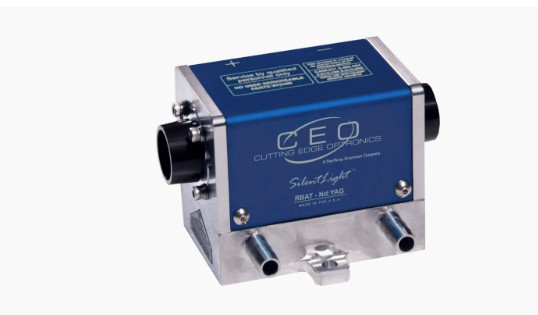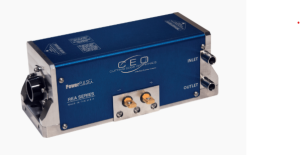The RBAT series are available with rod sizes from 2 to 4mm in diameter, both CW and QCW pumped, and standard offerings of YAG and YLF materials. Maximum CW powers of 150W and long pulsed energies of 500mJ are supported. Typical uses are laser single mode oscillators for pulsed MOPA systems, CW pumped, 532nm, ns q-switched lasers, and LIDAR lasers.
HIGH PULSE ENERGY AMPLIFICATION
Large laser amplifier modules enable high pulse energy output.
Nd:YAG and Nd:YLF are excellent laser crystals for high-energy DPSS lasers due to their robustness, availability, and optimal pump and output wavelengths. Each gain medium has its advantages and disadvantages. While Nd:YAG is more robust and homogeneous, and its high stimulated emission cross section results in low stored energy density adequate for high-frequency operation, its poor performance under high thermal load (thermal lensing and thermally induced stress birefringence) limits its achievable maximum average output power.
ENABLING HIGH AVERAGE POWER
Nd:YLF’s high saturation fluence (low-gain cross-section) allows high laser fluence while minimizing pulse distortion.
It has a relatively weak thermal astigmatism as well. However, its poor transmitted wavefront quality and low thermal fracture limit are disadvantages that must be addressed. In the design of large diameter high energy Nd:YLF amplifiers, CEO employs the use of MRF on the laser crystals in order to minimize transmitted wavefront error (TWE). Large TWE can negatively impact beam quality and subsequent SHG conversion efficiency (as well as efficiencies in Ti:S, OPA, and OPCPA pumping.) MRF enables higher energy pulses, higher repetition rates, and, thus, higher average power. Pairs of modules with increasingly larger A-cut rods are used further downstream to amplify the light, with the crystal axes in each pair arranged orthogonally to minimize thermal birefringence distortions.







